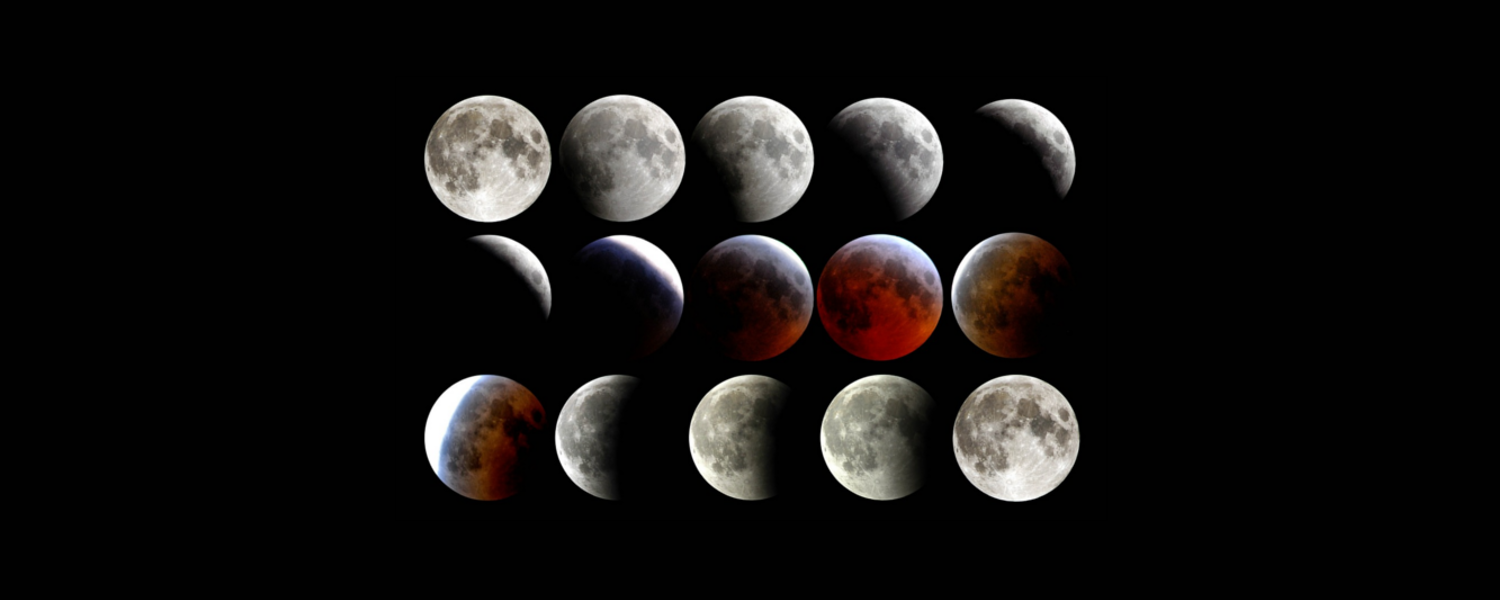
March 26, 2015
Popularly called blood moons, the lunar tetrad that began in 2014 is a myth, mystery, and superstition filled phenomenon. However, the process for viewing it is easy, and straightforward. We are going to go through the whole process here, from what you need to know to (exactly) when you need to wake up.
First things first, boring definitions. A lunar eclipse means that earth is positioned between the sun, and the moon. It blocks the suns rays from hitting, then reflecting off the moons surface. (You will be looking at the moon.) Second, safety concerns. There are none. Unlike a solar eclipse, when you are looking directly at the sun, during a lunar eclipse it is not necessary to protect your eyes to view it. Third, why is this special? Feel free to Google “blood moon” till your brain goes numb, if you are interested in the supernatural claims behind the name. Here, all I care to say is that it represents a unique characteristic of a total lunar eclipse. That is, the moon appears a coppery reddish color at its peak. This is because while the earth blocks all the direct light from the sun, some of the sun’s rays still filter through the edges of the earths atmosphere before indirectly hitting, and reflecting off the moons surface. This produces a reddish color much the same way a sunrise or sunset does. If fact, it can be thought of as seeing the reflections of all the sunrises and sunsets on earth happening at that moment!
So down to business. The first lunar eclipse this year is April 4, 2015, and the second is September 27/28, 2015. Now that you know you don’t need any special eye protection or equipment (if you have a telescope, I’m sure it’s really cool, if you don’t -I don’t- don’t feel like you can’t watch without one), and you have some idea what you are looking at, the hardest part is getting out of bed. And believe me, I don’t take that lightly! So much so that I watched most of the last lunar eclipse through my bedroom window, lying sleepily at the foot of my mattress. (You can read the brief article about my Enchanted Eclipse Adventure here.)
To find out what time you need to be watching the sky, and which parts of the eclipse you will see when follow this link to TimeAndDate.com. Halfway down the page, click “Is this eclipse visible in _____?” (You can also change the location on the next page if it isn’t right.) They give a very specific run down of what you will see, and at what time. One of the cool things about the eclipse is that everywhere the eclipse is visible viewers will see approximately the same thing at the same time. However, this page helps with time zone differences, and what will be visible to you.
The last thing to consider is location. Remember, generally the moon appears to rise at night in the east, and set in the west. So if you are viewing an eclipse just before sunrise, it is going to end for you near the western horizon. The April eclipse will only be visible in the US for the first half, as was the one last fall. This means it will disappear over the western horizon so the closer to the horizon your direct line of sight is, the longer you can see it. The eclipse in Sept will be much more visible to much more of the US.
That’s it! Maybe except for setting your alarm.
The lunar tetrad that we are 50% through is a unique series of four of the these eclipses in a two year period. However after September, it will be until 2018 before another total eclipse is visible. So enjoy the all worlds sunrises, and sunsets while you can!
We travel, going to far lengths to see the amazing sights this planet has to offer, or complain that we aren’t able to. Take the time to experience the wonders of the world around you, and see something out of fairy-tales!
They say that life is an adventure. But that’s only true if you have Adventures in your life.
-Michael Speck
Did you see the eclipse? Tell me about it in the comments section!
*Photo courtesy of Pixabay